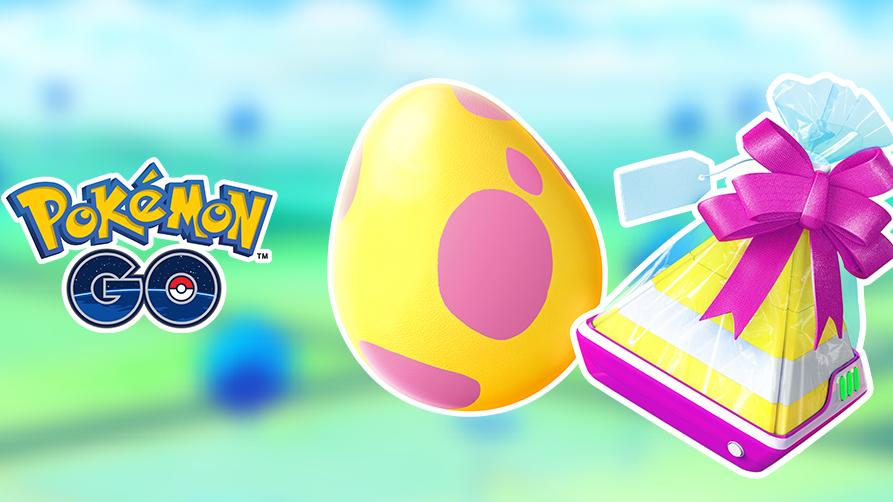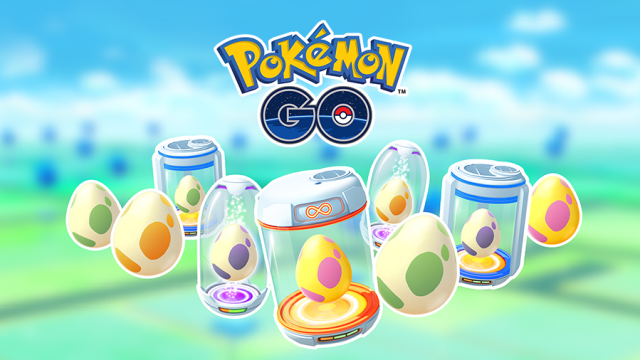Pokémon Go developer Niantic is testing a feature that lets players see what might be inside the game’s eggs before they walk the many miles to hatch them. It appears this is a response to the argument that the game’s eggs are akin to lootboxes. There is an awful lot that could be better about Pokémon Go, but I would argue that demanding its eggs be held to the same standards as the most cynical and cruel of EA/Activision lootbox behaviour really isn’t necessary.
Trainers, we’re excited to share that we’re starting testing where a limited number of Trainers will be able to see which Pokémon may hatch from Eggs in their Inventory!
— Niantic Support (@NianticHelp) March 11, 2021
The latest change to the free-to-play mobile app is a neat way to see what Pokémon could possibly hatch out of any egg you might collect while playing. Listed in order of possibility, you also get an idea of just how unlikely it might be that out of any particular egg will pop a shiny version of the rarest beast. It appears this is another step toward providing more transparency to players who are frustrated by grinding eggs for rare monsters, only to receive yet another Trubbish.
Lootboxes, in general, are an exploitative tool used by developers/publishers to get players to spend more money on a game they’ve already bought. They imply that to get the most out of a game, to get an advantage against others, you need to keep spending, keep paying for more sealed containers that might contain items/accessories/weapons that could improve their performance in the game, or carry inherent worth. It’s why they’re increasingly recognised as gambling, and are even outlawed in some countries. They suck, they’re nasty, dirty business, and it’d be great to see games rid of them.
That’s not what Pokémon Go has, at all. The game’s eggs are a system that offer the player no meaningful advantages, and all works perfectly well within the core game, without ever having to spend any money at all, frequently providing fun, surprising rewards.
It works like this: via a variety of means, as you play the game you pick up eggs. They are colour-coded based on how far you have to walk to hatch them — 2/5/7/10/12km — and can contain a variety of Pokémon. To hatch them you need to put them in an incubator, and from the start of the game you’re given one of these with infinite uses. You’re also, early on, showered in other incubators with limited numbers of uses.
It’s certainly a little shady — the game gets you used to having plenty of incubators on hand, right up until you don’t. They’re often included in rewards for completing the earliest tasks, but then just as you’re comfortable the supply runs out. And yeah, like the obvious dealer analogy, it turns out you can get more, but now you’re going to have to pay.
But, really crucially, you just don’t have to. In fact, it’s actually incredibly unnecessary to do so. While there are chances of hatching a particularly rare Pokémon at given times, those chances are so low, and the effort to hatch anything — walking at least a kilometre for the most generic eggs (when aided by a Super Incubator), and as far as 12km — means that there are invariably far better ways of finding those monsters elsewhere. Honestly, anyone who is spending fortunes on incubators, then marching around vast distances days on end to try to hatch that Axew, is making some very specific life choices.

Pokémon Go is a game made of random chances from the ground up. And not in a darkly cynical F2P exploitation model, but in fact in all the ways that make the free aspects of the game so great. Every time you catch a Pokémon, there’s a random chance it could be a shiny. That’s so fun! Every Pokémon you catch has a random chance of being a “hundo,” a “four star,” or whatever name you give to those oh-so elusive 15/15/15-rated creatures. Heck, it could be a “shundo!” (It won’t be. It never is.) When you compete in a raid, the version of the creature you catch could turn out to be shiny! Shiny legendaries! When you send gifts to a friend (gained for free from Poké Stops, containing Poké Balls, potions, revives, and sometimes eggs) by random chance you can become “Lucky Friends,” meaning your next trade will be guaranteed to become a Lucky Pokémon. Heck, trading ‘mon randomizes their IVs (the ratings for Attack, Defence and HP). Everything in this game is about dicerolls!
What’s so crucial about POGO is, first, that every element of it, bar the ticketed events, can be free. (I know someone on level 39 who swears he has never spent a single penny on the game.) Gather enough “friends” (which is so simply done via Facebook, Reddit, various apps like Poke Raid, etc.) and you’ll be deleting Poké Balls in their hundreds to have room for anything else.
Also, “grind” works very differently when compared to the more usual understanding of the term. Pokémon Go is a game designed to be played very slowly, over a very long time — but you can’t pay your way to shortcut this! It’s all core design, not exploitative slowdown. It’s a game based around the idea of going for a lot of walks — to not walk while playing it makes it a pretty tough endeavour (despite many excellent efforts by Niantic) — and over months gathering enough resources to evolve particular Pokémon. No one’s getting a Gyarados in their first week, because you need those 400 Magicarp candy. My son and I have been playing ridiculously intensively since August 2020, and we’re only 309 Swablu candies into the 400 we need for an Altaria. But those eight months have been punctuated by just so many significant moments, catches, evolves, and achievements. The game’s exploitation of us in terms of how it motivates us to keep playing is not to take our money, but to make us get some exercise.
As I said at the start, there is so much to criticise about POGO and the actions of its developers, Niantic. Nothing makes me angrier in the game than watching a legendary Pokémon mysteriously escape from multiple Excellent spin-thrown Ultra Balls after guzzling a dozen Golden Raspberries. Using up players’ remote raid passes to do garbage like that is gross, and doubly so when it makes my excited little boy burst into tears. But rather than seeing the game’s eggs at lootboxes, I see them as just another way of getting fun surprises in the game, and you’re provided with an infinite incubator to receive them.
As I acknowledged at the start, I do think the game deliberately tries to get you used to having a bunch of incubators on hand. However, it does still occasionally offer extras as rewards, or include them in the 1 coin boxes in the store (and you can get 1 coin by leaving a Pokémon in a gym for a few minutes). In eight months, I’ve bought extras once, and that was as part of splashing out on an Adventure Box (outrageously expensive paid boxes that get you a bunch of items, including 15 Super Incubators). And it’s been fine!
Most of all, you’re not competing against anyone else. Sure, there are battles, but you certainly don’t need the rarest Pokémon to win at those — my six-year-old is likely slaughtering you just fine without them. There’s just no meaningful advantage to the player to have one, and as such they’re incomparable with trying to gain that elite soccer player to gain a leg-up in online competition. Yes, people want to complete their collections. But, you know, that’s a very personal choice.
I’m glad Niantic are making it easier to know what might come out of an egg. But personally I’ll never be looking. The surprise when an egg appears on screen, ready to crack open, is why they’re fun.

Leave a Reply